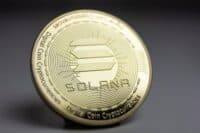
On April 16, Nvidia Corp. (NASDAQ: NVDA) announced that it had received approval from China’s State Administration for Market Regulation to complete the company’s $6.9 billion acquisition of Mellanox. The acquisition of the Israel-based supplier of smart interconnect products for data center servers and storage was first announced in March 2019. It was expected to be completed by the end of last year, but Chinese approval took longer than expected.
The Mellanox acquisition is the largest since the company’s founding in 1993. Nvidia CEO Jensen Huang said at the time the deal was announced that “skyrocketing demand on the world’s datacenters” requires “holistic architectures that connect vast numbers of fast computing nodes over intelligent networking fabrics to form a giant datacenter-scale compute engine.” Mellanox technology provides those connections.
The good news for investors is that Santa Clara-based Nvidia has the cash in hand to pay for Mellanox. At the end of January, the company reported cash and equivalents of $10.9 billion. The company made no share buybacks last year and paid out a relatively paltry $390 million in dividends. Yet, over the past five years, shares have posted a gain of more than 1,200%, even including a stock price drop of nearly a third in the final three months of 2018.
After posting a 52-week high of $316.13 in the middle of February, Nvidia shares followed the market down as the coronavirus epidemic spread around the world. The stock sank by about 38% in a month before recovering to trade about 6% below the year-to-date high as of April 16. So far this year, Nvidia’s stock is up 22.9%, compared to Intel Corp.’s (NASDAQ: INTC) 1.2% increase and a 22.1% gain for Advanced Micro Devices Inc. (NASDAQ: AMD).
How Nvidia Got Here
Nvidia’s first product in 1995 was the Diamond Edge 3D graphics accelerator card. A PC-compatible plug-in, the card featured a graphics core based on quadratic texture mapping.
Just four years later, the company released the first graphics processing unit (GPU), the GeForce 256, capable of rendering 10 million polygons per second. It was the first step along a path that led to modern GPUs that draw 7 billion polygons per second.
That year, 1999, was also when Nvidia held its initial public offering, selling shares at $12 apiece.
Since that IPO, Nvidia’s stock has appreciated by more than 19,000%. Compare that with Amazon.com Inc. (NASDAQ: AMZN), up more than 3,700% over the same period, or Tesla Inc. (NASDAQ: TSLA), which has gained more than 3,000% since its IPO in 2010.
Nvidia’s focus on high-performance graphics processors carved out a niche in the video gaming industry as the company’s GPUs continued to add more and more realism to game playing. The company extended its capabilities into two computing-intensive sectors that demand massive numbers of operations per second: bitcoin mining and autonomous driving.
How Bitcoin Boomed, Then Bombed Nvidia
In January of 2017, a single bitcoin sold for around $1,000. By the end of the year, the price had soared to right around $19,500. Cryptomining became a highly profitable enterprise, and Nvidia’s GPUs were highly sought after by bitcoin miners for their speed, low power consumption and reasonable cost.
Demand exceeded supply, the price jumped and Nvidia posted some its highest ever revenue figures in the first half of 2018. When bitcoin prices began tumbling in early 2019, so did demand for Nvidia’s GPUs. Year over year, revenue in the company’s first nine months of 2019 fell by more than $1.5 billion. The stock price dropped by more than 50% between October 1 and December of 2019.
For the 2019 fiscal year (February 2018 through January 2019), Nvidia reported $11.72 billion in revenues, $2 billion more than in the prior fiscal year. In fiscal 2020, Nvidia reported revenues of $10.92 billion. In its annual report for the 2020 fiscal year, Nvidia did not even mention cryptomining sales.
Will Self-Driving Cars Be the Next Big Thing for Nvidia?
Video gaming still provides half of Nvidia’s revenues. The next biggest chunk comes from sales to data centers, which rose to $2.98 billion in the 2020 fiscal year. Automotive revenue totaled $700 million last year, which was up 9%.
Autonomous vehicles are not ready for prime time and almost certainly won’t be for several years. Last April, Tesla unveiled its own self-driving chip, designed by Tesla and fabricated by chipmaker Samsung. Most other automakers use Nvidia chips.
Unless and until self-driving vehicles take off, data center demand for hyperscale machine learning and artificial intelligence algorithms are set to take over as Nvidia’s largest revenue segment. If you’re looking for more justification for the Mellanox deal, moving data around increasingly larger data centers requires both bandwidth amplification, which Mellanox provides, and the reduced latency by Nvidia’s high-powered chips.
Thank you for reading! Have some feedback for us?
Contact the 24/7 Wall St. editorial team.
 24/7 Wall St.
24/7 Wall St.


